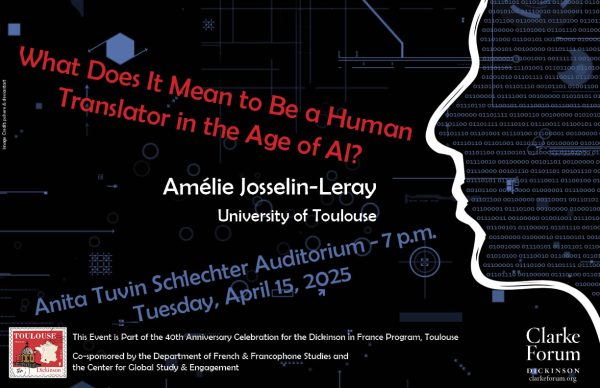One Dude’s Halloween Costume Does Matter
Column space in the Dickinsonian is best filled with the thoughts, opinions and pontifications of students, and for good reason: yours is a vibrant student forum. But reading the Nov. 9 commentary by my colleague in Philosophy, I feel that no single view on this matter should define the perspective of a diverse faculty. I would feel remiss if his words stood for all of us.
I do agree with Professor Sartwell on some points. If you’ve studied racism for more than 35 minutes you know White supremacy is not merely a set of stubborn prejudices. It is a social system, a dogged beast that reaches deep into all of our major social institutions—employment, housing, lending, voting, education, healthcare, transportation and on and on. Jonathans get more employer call-backs than Jamils. Chicago neighborhoods like North Lawndale once subject to red-lining, are ensnared sixty years later by predatory banks who lure African American residents into risky mortgages with subprime rates. States like North Carolina slice voter districts like a well-trained surgeon so that African Americans political power is spread thin, tamped out. And it just keeps on coming. Of course racism is institutional.
So, who cares about a fake Afro on Halloween? It depends where you stand. For Professor Sartwell and other colleagues whom I respect, fake Afros are not the real problem. Discrimination is the real problem. Handcuffs and jail cells. Real guns with bullets. But images and symbols give coherence to institutional racism and the violence that defends it. Early 20th century Jim Crow laws and lynching campaigns might have created more dissonance among White citizens if it weren’t for minstrel shows or films like Birth of a Nation, with its demeaning depiction of Black masculinity. Without pervasive, modern racial stereotypes, many more sensible, well-meaning people of all backgrounds might feel shaken by the tens of thousands of people of color swept up into the criminal justice system every year. Notions that African Americans are violent, inferior, lazy or stupid have been held up to naturalize inequalities and make them seem inevitable.
Ethnic and racial caricatures run deep. It is an empty gesture to parse racist symbols from the violence and institutional inequalities they legitimate. Words and pictures justify handcuffs and jail cells. All of it is real. If the goal is to change social structures, we would be wise to identify the symbols that suffuse them with power.
It turns out that one dude’s Halloween costume does matter to students who demand the right to study, work and live in a community without being harassed or demeaned. And while the individuals with the wig and the gun are key actors in this mess, my sense is that student protesters accurately identify this as a cultural problem, not an individual one. Was no one else at the party self-possessed or confident enough to confront this first-year student? One student wore the wig but a whole room of people decided to go with the flow.
At the faculty meeting last Tuesday, students covered the windows of the HUB Social Hall with hand-written banners. You demanded our attention. You asked for our support. Please know that you have strong allies among us, who see you and know that your struggle is real.




JC Sosa-Soto • Nov 16, 2017 at 1:31 pm
Thank you sir so much for this post! I appreciate knowing thatw e do not stand alone!